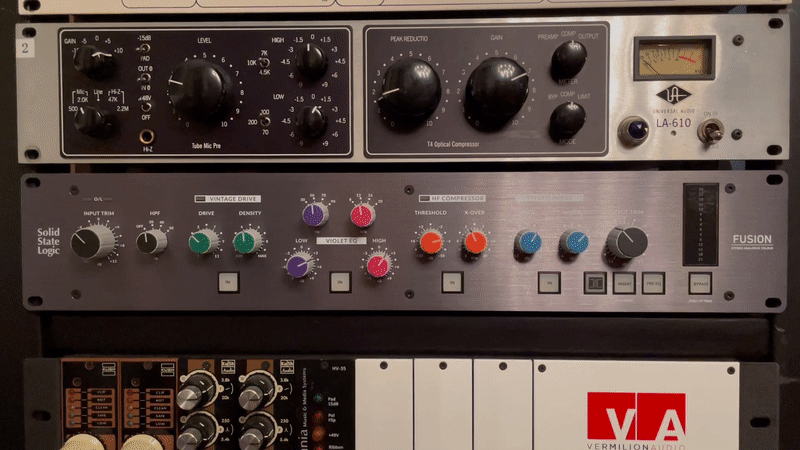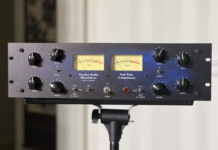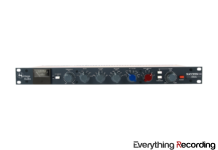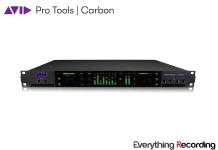We at Everything Recording understand you’re not made of money. Not everyone can amass racks of outboard gear and collect them like Pogs (remember those things?). So when we review a product in the four-figure price range, we want to make certain it’s either the real deal or market hype. So, in the case of Solid State Logic’s latest brainchild, we obtained one a year ago and vowed not to write a review until after the honeymoon phase of the gear relationship is over and reality sets in. Behold, my year with the SSL Fusion!
Needs No Introduction
Ah, one of the Holy Trinity of pro audio. Solid State Logic is a tentpole in the music industry. Despite being exponentially easier to get audio mixed in the box, some part of nearly every song on the radio (even to this day) still passes through their hallowed “super analogue” circuits. I mean, when countless manufacturers have glommed onto your name to sell their own versions of your products, you’ve done a few things right.
While the bulk of their prestige comes from their EQ and Compression, they haven’t built very many new original audio processing tools. Most of the latest releases are impressive smaller format consoles and control surfaces. That’s great and all, but the world needs another all-new piece of hardware from SSL that audio can pass through. Hardware that brings life back into the populace’s aging eyes who experienced their consoles firsthand and distracts the new generation from their mouse, screen, and piles of plugins. Enter Fusion.
No Con-Fusion
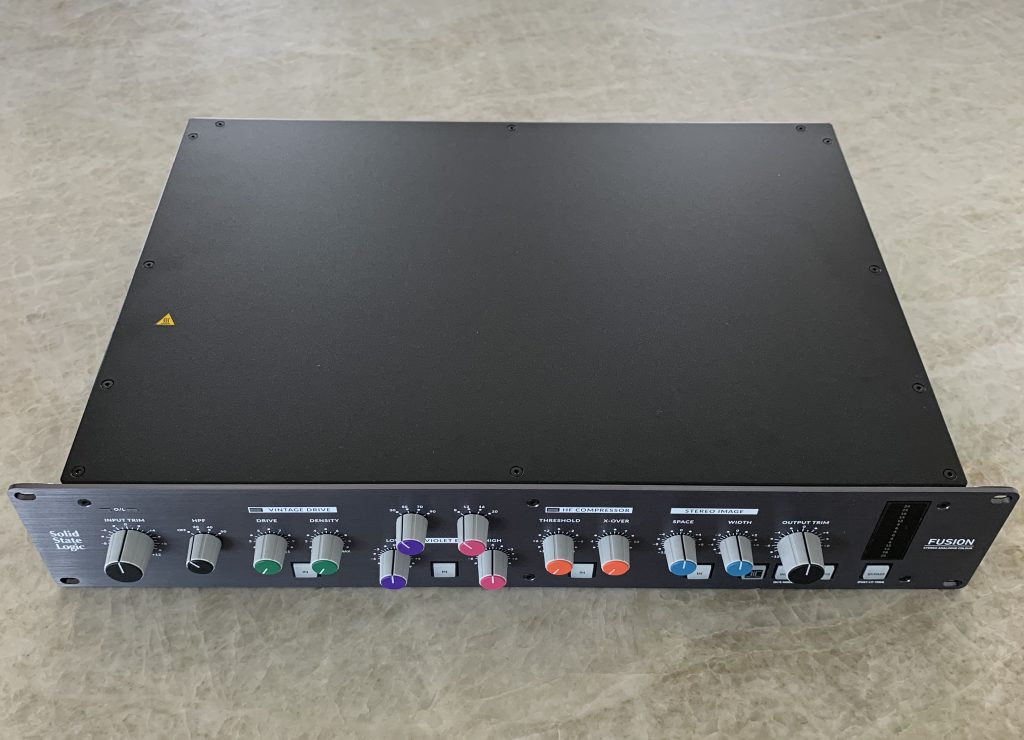
As soon as you pull Solid State Logic’s new “color box” from the packaging, you can tell the Fusion is unquestionably SSL. From the dark faceplate adorned with the signature colorful knobs to the unmistakable metering, the 2-rack-space, 2-channel Fusion maintains the iconic looks of its British royalty.
However, that’s where the familiarity ends. The Solid State Logic Fusion is a whole new animal. It’s no secret that SSL has been steadily modernizing with the changing of the times and know that the majority of today’s studios don’t, won’t, or can’t justify the price tag of a large-format console (to say nothing of the cost of maintenance AND electricity). Yes, they still produce several excellent mid-to-large-size consoles (their AWS Delta certainly deserves a look) – but most of us just need a few channels of that analog shade and color. So, in its place – the Fusion is a piece of hardware that fits in many more spaces and budgets. If you’ve got the extra pair of inputs and outputs on your interface (and a rack, you savages), the Fusion would be a great way to put them to work. On that note, while you can run mono channels through the Fusion, Solid State Logic created this with the intent of stereo channel, busses, and at the end of your mix or mastering chain.
The Solid State Logic Fusion gives you six individual flavors (in series) of “Analogue Colour” (note the prim ‘u’ in ‘colour’) as the end result of decades of seeing what pieces of gear make music sound best. The result is a one-stop shop with harmonics, saturation, EQ, dynamics, stereo imaging, and some transformer magic. Although you’d think that much processing would be a veritable cockpit of controls, Fusion confines each section to no more than two knobs. The “IN” solid-state switches enable each Colour Circuit, giving you complete and instant control of what processing you want on your chain. Additionally, you’ve given a master BYPASS that can work post-input trim or completely bypassed.
The Standards
The operation of Fusion is pretty straightforward. For the basics, you’ve got:
- Input and Output trim capable of ±12dB
- A 3rd order 18dB per octave High-Pass filter capable of 30, 40, and 50Hz
- Six color circuits.
- Vintage Drive
- Violet EQ
- HF Compressor
- LMC (Listen Mic Compressor)
- Stereo Imager
- Transformer
Additionally, Fusion includes a versatile insert point that you can place either pre or post-EQ or in mid/side mode. Note: when using pre/post-eq with mid/side mode, the insert point doesn’t go pre-EQ. It moves before or after the Stereo Image colour circuit. The additional insert gives Fusion even more reason to remain permanently affixed to your stereo bus, with the added ability to patch in, say, an SSL G-Series Bus Compressor.
Circuit City
While most rack mount pieces of gear tackle one main task (compression, EQ, or saturation), Fusion gives you an entire sweet shop of sweet analog ear candy. Of course, these processes are all available as plug-ins, but their origins are based on the circuits below. Everything from their functions to their placement in the signal chain is based on SSL’s legacy of award-winning designs.
Vintage Drive
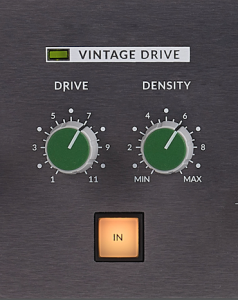 Saturation can be the difference between a disjointed mix and one where tracks meld together to a cohesive whole. Vintage Drive brings a non-linear saturation akin to pushing a console to gradual analog overload. Like the “VHD” circuit in their Alpha series preamps, Vintage Drive introduces either odd or even order harmonics.
Saturation can be the difference between a disjointed mix and one where tracks meld together to a cohesive whole. Vintage Drive brings a non-linear saturation akin to pushing a console to gradual analog overload. Like the “VHD” circuit in their Alpha series preamps, Vintage Drive introduces either odd or even order harmonics.
Don’t let Vintage Drive’s two knobs fool you, some things are better left to simplicity. The Drive knob controls how much saturation you want, all while compensating for its gain increase. In true homage to another icon in the music industry (and their quite popular 2/2+ USB interfaces), this knob goes to “11”. Additionally, the tri-color LED indicates just how much saturation you’re applying by changing from green, to orange, to red. Unlike its digital contemporaries, red does not necessarily always mean stop.
The Density knob controls the type of saturation effect. Settings below “3” apply even-order harmonics, and settings past “3” gradually increase odd-order harmonics. Think of the lower settings as more of a subtle “thickener” and higher settings more like a soft compressor. A fun tip is to set the density as its lowest point and increase the drive. Vintage Drive will behave more like a transient designer to bring out the punch and attack of dynamic material.
Violet EQ
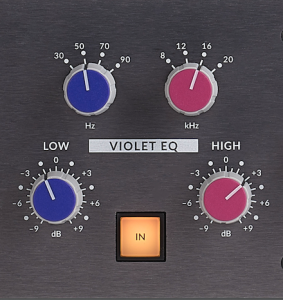 SSL has famously had many “colours” of their EQ circuits over their near-fifty years. So if you find yourself wondering why the knobs’ collet knobs are something new, it’s because the Violet EQ circuit is in fact, all new. Violet introduces two new shelving EQs based on minimum-phase shift filters. These were created to quickly add overall weight and shine to tracks via its stepped frequencies. The low shelf steps at 30, 50, 70, and 90Hz at ±9dB while the HFE shelf clocks in at 8, 12, 16, and 20kHz. These EQs have been specifically designed to be mixed into – meaning modest amounts of both Violet’s low and high frequencies should be applied, even before starting the mix.
SSL has famously had many “colours” of their EQ circuits over their near-fifty years. So if you find yourself wondering why the knobs’ collet knobs are something new, it’s because the Violet EQ circuit is in fact, all new. Violet introduces two new shelving EQs based on minimum-phase shift filters. These were created to quickly add overall weight and shine to tracks via its stepped frequencies. The low shelf steps at 30, 50, 70, and 90Hz at ±9dB while the HFE shelf clocks in at 8, 12, 16, and 20kHz. These EQs have been specifically designed to be mixed into – meaning modest amounts of both Violet’s low and high frequencies should be applied, even before starting the mix.
HF Compressor / LMC
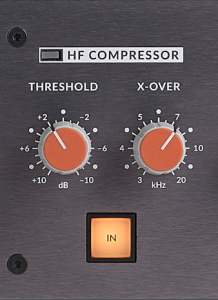 For as often as we hear younger engineers and producers talking in hallowed voices about getting the “magic” of tape onto their tracks, a startling percentage have never really worked that much with the real thing. That’s not admonishment, a quality, restored 2-track machine will run you quite a bit more than the Fusion’s street price. Oh, and like the legacy consoles we talked about? They need to be maintained. Calibrated. And tape stock is a lot harder to find than another hard drive.
For as often as we hear younger engineers and producers talking in hallowed voices about getting the “magic” of tape onto their tracks, a startling percentage have never really worked that much with the real thing. That’s not admonishment, a quality, restored 2-track machine will run you quite a bit more than the Fusion’s street price. Oh, and like the legacy consoles we talked about? They need to be maintained. Calibrated. And tape stock is a lot harder to find than another hard drive.
Anyways, your friends across the pond know that one of the most desirable traits of tape is the gentle, ever-so-sweet frequency roll-off around 14kHz. The HF (High Frequency) Compressor circuit does just that. Dial in the threshold to engage compression and the X-Over pinpoints the frequency. Like the Vintage Drive to your left, the tri-color LED gives feedback on how hard this block is going to work and again, let your eyes AND your ears be the ultimate judge.
While the Fusion was originally billed as having five “Colour Circuits”, SSL had one more trick “in the air tonight”: The HF Compressor is loosely based on the famed (and often-imitated) Listen Mic Compressor from their 4000 Series consoles – originally designed to prevent a live room’s talkback mic from overloading. However, it’s insanely grabby, gazillion-to-one ratio sound quickly became used for creative purposes by many-a-1980’s savvy engineer. Though it’s a ‘hidden feature’, it’s very much there. Simply hold down the Colour Circuit’s IN button for five seconds and the HF Compressor enters “Full Band LMC” mode. The Threshold still controls when to trigger compression, but the X-Over becomes a Wet/Dry knob. Now you can smash drum tracks to oblivion AND blend them back in with the dry signal. Enjoy!
Stereo Image
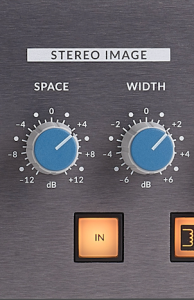 Without the right dimension, your mixes are going to have a hard time stacking up. That’s why SSL added the Stereo Image function – bringing true mid/side capabilities to the Fusion. Width controls the level of the sides by ±6dB, giving you the ability to narrow or widen the mix. To sweeten the deal, the Space control adds a broad boost or cut of the low frequency to the sides by ±12dB.
Without the right dimension, your mixes are going to have a hard time stacking up. That’s why SSL added the Stereo Image function – bringing true mid/side capabilities to the Fusion. Width controls the level of the sides by ±6dB, giving you the ability to narrow or widen the mix. To sweeten the deal, the Space control adds a broad boost or cut of the low frequency to the sides by ±12dB.
The Width utilizes the “Stereo Shuffling” processing developed by Alan Blumlein. While normally, low end is usually cut from the sides, pushing a little low end into the corners of a mix can add fullness to a mix.
Transformer
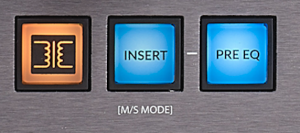 Finally, rounding out Fusion is a custom-designed output transformer. Now, a lot has been written about the transformative quality of running your audio through them, it’s actually a quite subtle effect unless driven really hard. So while it’s certainly the most subtle of the Colour Circuits, it still does add a subtle oomph to your mix. In almost every case, it’s best to leave it engaged. It never hurts to add a little more iron in the signal.
Finally, rounding out Fusion is a custom-designed output transformer. Now, a lot has been written about the transformative quality of running your audio through them, it’s actually a quite subtle effect unless driven really hard. So while it’s certainly the most subtle of the Colour Circuits, it still does add a subtle oomph to your mix. In almost every case, it’s best to leave it engaged. It never hurts to add a little more iron in the signal.
Simple, Simon
In true showmanship fashion, Fusion comes with a few tricks that set this unit apart from the pack. Upon pressing the power switch in the rear, the four Colour Circuit switches will rapidly race from one end of the unit to the other, ending with the LEDs dimming and pulsing to life. Sure, this is only a quick self-test, but it sure seems to impress clients if they happen to be in the room when I fire it up.
The clicking sounds you hear at boot up are the Solid State switches’ relays. These switches trigger a single relay which, on top of giving acoustic feedback to the buttons for a more “analog feel,” gives way to a multitude of extra functions, both utility and fun.
For instance, say you have a client running late, and you’ve looked at all of Everything Recording’s posts on Instagram (Spoiler: there’s not many). Now you’re bored. Easy. Power up Fusion while holding the four “IN” switches. Fusion instantly transforms into the 70’s hit game “Simon,” where each Colour Circuit “IN” switch is a control, and the master meter shows your score. The right bar meter is x1 points for each bar, and the left is x10. To start a game, press the flashing BYPASS control. Repeat the same sequence as Fusion and progress to the next level. For the record, I played with this for quite a while, and it’s not as easy as you think. Bonus: when your client walks in, you look like you’re calibrating gear, win-win!
A Year in Use
For an entire year, I stapled the SSL Fusion to my mix bus. I quickly found a starter preset that worked on just about any mix and would slightly tweak as needed. From the word “go”, the controls just made sense. Never once did I find myself fumbling around or not understanding exactly what I was doing by turning a knob. Those who have cut their teeth on hardware will love the tactile control – and the digital generation will feel right at home with the almost plug-in-like modular control of each Colour Circuit.
Fusion can be as subtle or overt as you want it. Even in small amounts, you can hear a clear difference – almost always for the better. While I normally kept each Colour Circuit on most of the time, there were a couple I used more heavy-handedly. The Vintage Drive and HF Compressor were the ones I reached for the most. The Vintage Drive would gel the mix together while the HF Compressor would smooth out the top end, allowing me to push the Violet high-frequency shelf a little harder into it. Overcooking the EQ into the HF Compressor yielded a very specific result.
Though it’s often best used subtly, you’ll never notice the Fusion’s effect so much as when you bypass it. Suddenly things just felt uninspired and limp, and missing that magical “it”. The Fusion is often incorrectly thought of as a bus compressor and yes, that is some small part to what it does. The truth of the matter is that for your everyday mix compression, you’ll want to keep your favorite plug-in or hardware unit patched in. And if you’re still looking for a great mix compressor, well, Solid State Logic has a particularly popular one they’d love to show you.
The Price is Right
While I know the $2495 price tag is not something to take lightly, I can confidently say the Solid State Logic Fusion is, in my opinion, worth every penny. If you break the price down to each Colour Circuit, you’re only paying $415 each. If this were parsed out in 500 series modules, you’d need twelve modules, to say nothing of the 500 racks to house them. Plus, having everything in one unit makes life much easier in use. I refuse to mix without it. Even if I happen to have to mix on the road, I will not call a mix complete until I’ve taken it home and run it through Fusion.
Individual tracks will love it too. I often find myself processing busses through Fusion and printing them back into the session. Not only does this practice enhance the sound of a track, but it also encourages committing decisions.
Enough Talk, Let’s Hear It
You’ve read enough – the proof is in the final product. Let’s listen to some before and after of Fusion on a few tracks to see what it’s made of.
First, let’s swing wide with Fusion and push it. We have drums running through the LMC setting. I know this is an extremely smashed track, but a track like this would be used in parallel to add some hype to a drum track.
First, bypassed.
Now, we clearly enable the LMC fully blended.
In a little more subtle setting, we used all Colour Circuits to put a final shine on a drum track. Notice how the snare opens up a little with Fusion.
Bypassed
Enabled
Lastly, using my starter preset, here is a before and after of a snippet of a project I’m mixing
Fusion bypassed
Fusion Enabled
In Conclusion
While I love analog gear, I’m not a purist. I feel both have their place in a modern professional audio workflow. I can genuinely say Fusion does something a plugin simply can’t. The combination of weight, dimension and the tone of the circuits in Fusion add magic I haven’t been able to tease out of working in the box. I’m sure if you really tried hard enough, you could make a plugin chain that could do something similar, but why would you want to go through the trouble? Instead of tabbing between six plug-in windows, it’s all right there in one handsome, “this guy means business” box.
I know the price may be a bit steep to some of our readers, but I assure you – once you bought one, you’d wonder how you ever worked without it. It will change your approach to mixing for the better and make life much easier. How do I know this? Well, I liked it so much, I bought it.
For more information visit Solid State Logic’s Product Page and to purchase, please consider using our affiliate link (here). It doesn’t cost you any extra and helps Everything Recording keep the lights on.
- Does something a chain of plugins just can't
- Sounds Incredible




